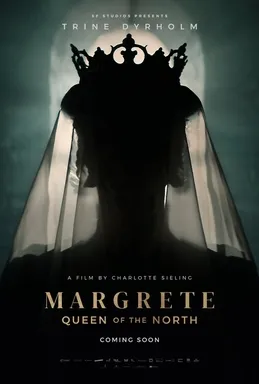Historical accuracy of Margrete: Queen of the North

Historical accuracy of Margrete: Queen of the North

Characters
Queen Margrete I
Margrete I was the real founder and effective ruler of the Kalmar Union. The film accurately portrays her intelligence, political maneuvering, and the powerful position she held in Nordic history.
King Erik of Pomerania
Erik of Pomerania was Margrete's real great-nephew and designated successor. The film depicts his historical status as the young king under Margrete's guidance.
Oluf Håkonsson / Man from Graudenz
Based on the real "False Oluf" who appeared in 1402 claiming to be Margrete's deceased son. While the event is historical, the man's true identity and Margrete's internal struggle depicted are speculative interpretations.
Peder Jensen Lodehat
Peder Jensen Lodehat was a real bishop and one of Queen Margrete's closest and most influential advisors and chancellors, accurately depicted as being central to her council.
Asle Jonsson
Asle Jonsson was a real Norwegian chancellor and a significant figure in the Norwegian Council of the Realm during this period, making his presence historically accurate.
Astrid
Astrid appears to be a fictional character created for the narrative, possibly to provide emotional context or facilitate plot points related to the False Oluf claimant.
More characters
Roar
Roar seems to be a fictional character representing Norwegian interests or factions within the Kalmar Union council, serving a narrative role rather than depicting a specific historical figure.
Sir Johan Sparre
While Sparre is a Swedish noble name, this specific Johan Sparre appears to be a fictional character representing Swedish perspectives or political maneuvering within the council.
Raberlin
Likely represents real figures from Prussia/Graudenz who supported the False Oluf claim initially, embodying the external forces interacting with the Kalmar Union regarding the claimant.
Jakob Nilsson
Represents the interests of German powers (like the Hanseatic League or Teutonic Order) who interacted with the Kalmar Union and had potential involvement or interest in the False Oluf affair.
Malgorzata Samborówna
Erik of Pomerania historically married Philippa of England in 1406. This character seems fictional, potentially representing earlier, unsuccessful marriage negotiations or political alliances considered in 1402.
Story
Margrete's role in the Kalmar Union
The film accurately portrays Margrete I's crucial role in establishing and maintaining the Kalmar Union, uniting Denmark, Norway, and Sweden. Her political acumen and strategic skills are central to the historical narrative and are well-represented.
Margrete's relationship with her adopted son, Erik
The film explores Margrete's complex relationship with her adopted son and successor, Erik of Pomerania. While the film captures some of the tensions, it takes some dramatic license with the specifics of their interactions and the evolution of their relationship.
The challenge to Margrete's authority
The film depicts a challenge to Margrete's authority in the form of a pretender claiming to be her long-lost son. While this element adds drama, its historical basis is debated. There were certainly challenges to her rule, but this specific claim is more fictionalized.
The portrayal of the plague
The film acknowledges the presence of the plague and its impact on the population.
The role of the Church
The film portrays the influence of the Church in medieval society, but its role is not extensively explored. The Church's political and social power is acknowledged but not a major focus.
The portrayal of women's roles
The film highlights the unusual power and influence that Margrete wielded as a female ruler in a male-dominated society. This is a central theme and is historically accurate. The film also explores the limited options available to most women of the time.
The political maneuvering and intrigue
The film accurately portrays the political maneuvering and intrigue that characterized the era. The complex alliances and rivalries between different factions are a key part of the story.
The details of the coronation and royal ceremonies
The film depicts coronations and royal ceremonies, but some details may be dramatized or embellished for cinematic effect. The overall spectacle is probably accurate, but some specifics may be artistic license.
The film's focus on Margrete's personal life
The film explores Margrete's personal life and relationships, but it necessarily speculates about some aspects that are not fully documented historically. The film balances historical facts with dramatic license to create a compelling narrative.
Setting
The political climate of the era
The film effectively depicts the complex political landscape of the late 14th and early 15th centuries, including the power struggles between the Nordic kingdoms and the influence of the Hanseatic League. The film captures the general atmosphere of intrigue and competition.
The depiction of medieval Scandinavian society
The film makes an effort to recreate medieval Scandinavian society, including costumes, settings, and social customs. While some aspects are accurate, others may be romanticized or simplified for a modern audience.
The depiction of daily life in the medieval period
The film provides glimpses into daily life in the medieval period, but these are often brief and serve primarily as background. The complexities of everyday life are not deeply explored.
The accuracy of costumes and sets
The film generally does a good job of recreating the costumes and settings of the period. While some artistic license is always taken in film, the overall look and feel of the film are generally considered historically plausible.
The language spoken in the film
The characters in the film speak modern Scandinavian languages. While this is understandable for a modern audience, it is historically inaccurate. The languages spoken at the time would have been earlier forms of these languages.
